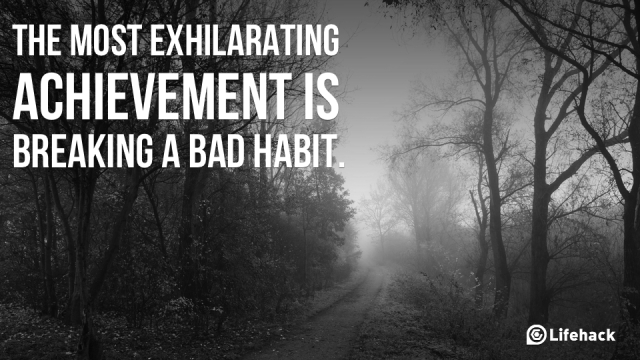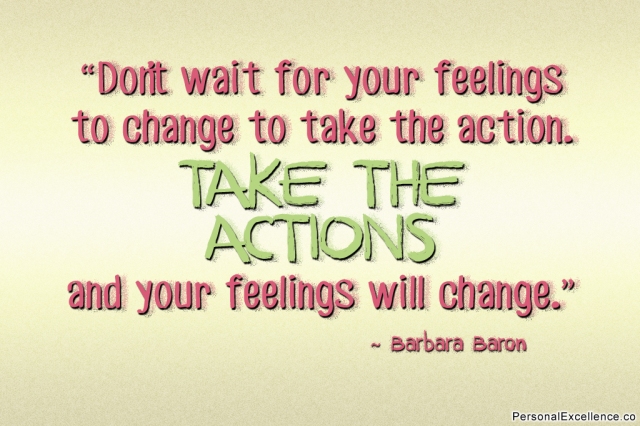 “I will arrange my closet today.”
“I will arrange my closet today.”
“I will surely communicate my real opinion to my team about the new project.”
“I will spend time with my 8 years old the way she wants.”
“This is my last cigarette.”
We know that we should do it all but we don’t.
It has nothing to do with our New Year Resolutions but everything to do with our EFFORTFUL CONTROL.
It is obvious that we like to do what comes easy to us – effortlessly.
If keeping a ‘bursting at seams’ wardrobe is effortless, we will somehow close it and forget about it till we open it again.
If ‘beating around the bush’ is far more effortless than being a “I don’t mince words” leader, I will continue to be a polite leader.
If I find playing Monopoly very boring, I will keep motivating my child to watch a film with me as that is what comes easy to me and interests me.
Letting the cigarette bite the dust forever requires me to take my self control a notch higher.
But how do I do what I don’t want to do but should:
- Welcome self change – We are phenomenal slaves of our habits. Resisting change is second nature to us. Giving all sort of excuses like “there is no time”, “there is so much stress” to justifying our behavior seems easier than admitting that we are fooling ourselves to remain the way we are.
First, admit that you need to change.
Second, instruct yourself to change.
Third, make a plan to initiate change.
Fourth, stick to it.
Fifth, pat yourself and talk about it to someone who can empathise and enforce the change.
Sixth, hold on to the change till it becomes the new habit.

- Believe in the law of delayed gratification – Notice children around you. While filling their plates for lunch/dinner, there are some who gobble up their favorite dish first while there are some who would save their favorite dish to be savored at end. The former type will not be able to change easily while the latter type knows the charm of saving the best for the end which keeps them motivated to finish the less likeable but nutritious part of the meal. Former children might not even finish everything on the plate after having their favorite part first.
Delayed gratification empowers us to sit through the mundane but necessary tasks as our favorite task waits for us towards the end. This delayed gratification works only when we auto-suggest the same to ourselves. It should not be offered by others like bait.

- Practice Effotful Control – I read about 12 years old boy from a Mumbai school who realized that he and his friend had a crush on the same girl. He told his friend to stay away from her to which the friend refused. After a few days the friend became a butt of jokes in his class as everyone started calling him gay. He found a lot of objectionable material posted on his profile. The Cyber Crime Cell of Mumbai Crime Branch found out that the 12 year old in the love triangle maligned his friend on facebook.
Not only this, an eleven year old in Mumbai staged her own kidnap drama to avoid writing a tough English test in school a day later. The child, on being caught by Police, revealed that she feared failing in the exam and did not want to be scolded by her dad.
Both the children, in the above cases, did not know where to draw the line on behavior such as this. We, as a society, have failed in helping them develop the ability to control or direct their own feelings.
Obesity among children, addiction to gadgets, drugs, violent behavior, tantrum throwing also arises out of lack of self-regulation.
We, as parents, should do two things to teach our children the art of self-regulation. First, let them feel the sensation of distress that accompanies an unfulfilled need. This is simple. Let us not make everything available to them. Let us not shelter them from feeling of delayed gratification.
Second, expose them repetitively to controllable challenges. Have you seen any child when he learns to ride a bicycle? The child sees someone riding a bicycle or some tutor shows him by holding the balancing act. After modeling for the learner, the tutor would hand over the cycle to the learner. As he practices, the tutor would offer hints and cues by remaining attentive as the learner tries. When the learner tries to balance his feet on both pedals, tutor gives support for a while. Then, he withdraws support gradually but completely. This three-tier approach of modeling, offering hints and gradually withdrawing adult support makes a person learn self-regulation.
Show, Help, Withdraw support – Repetition of the same process will help them develop their stress response mechanism. When the support is followed by independent action, they learn the lessons right.
****
Dr. Swati Lodha is an Author, Entrepreneur, Motivational Speaker, Parenting expert based in Mumbai. Having written Bestsellers like Come on get set go & Why Women are What they are, her book on Parenting will be published soon. Currently, she is running Life Lemonade which offers unique Training Programs on Life Transformation, High Performance Leadership, Women Issues and Parenting.
Connect with Dr. Swati Lodha on Linkedin, Twitter @drswatilodha & Facebook
Also read her best articles here!
